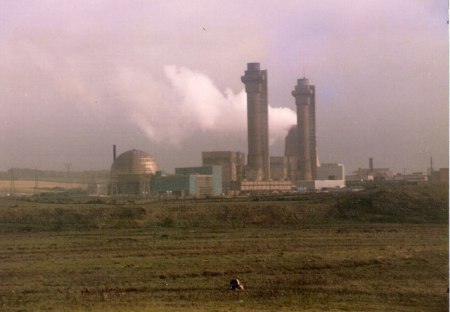There is no other site like Sellafield in the world. It is where many major developments in the 20th century nuclear industry were pioneered.
It is home to:
–the Windscale Piles, which were used to create material for weapons
–the world’s first commercial-scale nuclear power station – Calder Hall, opened in 1956
–the world’s first large-scale advanced gas-cooled reactor, opened in 1963
–nuclear fuel storage ponds and waste silos, built in the 1940s and 50s
–nuclear fuel fabrication plants
–nuclear fuel reprocessing plants
–a fleet of nuclear waste storage facilities
Sellafield is a densely packed site of just 6sq km housing thousands of buildings. Many of them store highly hazardous waste. Its oldest facilities were built in great haste during the early years of the Cold War with no plans for how they would be decommissioned. Record-keeping in the early days was poor by modern standards, meaning much work has had to be carried out to confirm the nature and state of the material kept in these facilities. There is no blueprint for decommissioning Sellafield’s oldest facilities. Staff and contractors had to come up with ground-breaking engineering projects in order to decommission these one-of-a-kind facilities. And these highly complex projects have to be done on small parcels of land, often just feet away from buildings containing highly hazardous material, with all of the safety constraints this presents.
When an uncertain challenge is combined with highly constrained working conditions and a series of never-done-before projects, the result is a long, complex and costly decommissioning programme. Huge strides have already been made at Sellafield, but it is fair to say the site will continue to test ingenuity in construction, engineering, nuclear science and project management for decades to come.
-Commissioned for use in 1952, the Pile Fuel Cladding Silo received and safely stored radioactive cladding―pieces of metal tubes—used for uranium fuel rods in some of the UK’s earliest nuclear reactors―first from military projects and later power plants. Other debris was added, and by 1964 the silo was full. The Pile Fuel Cladding Silo is 69 feet (21 meters) tall and houses six compartments that hold some 4,200 cubic yards (more than 3,200 cubic meters) of intermediate-level waste. The job at hand is safely retrieving the waste and storing it in highly secure concrete containers.
The first of six holes on the silo were cut (August 2017). To remove the waste, a crane will extend through the cut holes, and a grabber will drop down to scoop the waste up.It will be lifted out of the container and into a specially-designed metal box.
Sellafield decommissioning: Nuclear waste silo opened, BBC, Sept. 5, 2017
